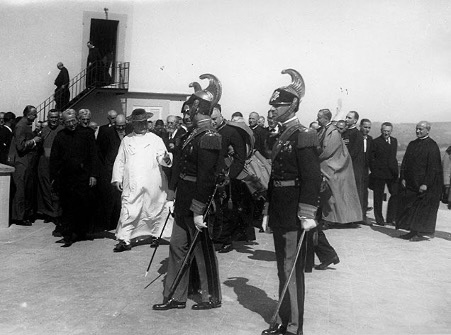
Deum Creatorem Venite Adoremus – Ninety Years of the Vatican Observatory at Castel Gandolfo
September 29, 2025, marks the 90th anniversary of the inauguration of the new headquarters of the Vatican Observatory at the Apostolic Palace of Castel Gandolfo. The Observatory is one of the oldest astronomical institutes in the world: its origins go back to the reform of the calendar from Julian to Gregorian in 1582. It was refounded in the Vatican by Pope Leo XIII in 1891 with the motu proprio Ut Mysticam.
In the 1920s, the growing problem of light pollution caused by the increasing illumination of the city of Rome made astronomical observation ever more difficult, and it became necessary to move the Observatory to a more suitable site. Pope Pius XI offered a solution, making available his summer residence at Castel Gandolfo, located 22 km from the capital.
The project of the new Observatory was entrusted to the renowned firm Carl Zeiss of Jena, with the aim of equipping it with cutting-edge instruments that would make it competitive with the best astronomical observatories of the time. Work began in 1932 and was completed in 1935.
On September 29, 1935, on the eve of his departure from Castel Gandolfo, Pius XI solemnly inaugurated the new Observatory, in the presence of the Secretary of State, Cardinal Pacelli, Cardinal Bisleti, a large number of ecclesiastical and lay dignitaries, and scientists. The Holy Father spoke words of great praise for astronomy, describing it as the science that more than any other recalls religion. Drawing inspiration from the words of the three Magi, he gave the new Observatory its motto: “Deum Creatorem, venite adoremus!” – Come, let us adore God the Creator!
This phrase, which still stands out today on the southern wall of the photographic dome, continues to be both an invitation and a constant encouragement for the astronomers who over the years have devoted themselves with passion to their nightly work, as well as for the many visitors who come today to admire the telescopes still housed there.
Under the main dome, built of wood with a diameter of 8.5 meters and set on the massive round structure of the palace’s ancient spiral staircase, the new visual refractor supplied by Zeiss was installed.
It was a modern telescope, featuring an equatorial mount and a 40 cm aperture lens with a focal length of 6 meters. In the second rotating dome, also made of wood with a diameter of 8 meters and built on the solid foundation of the palace’s northeast corner, the observatory’s principal instrument was placed: the Zeiss double astrograph. This included a refractor with a four-lens objective of 40 cm aperture and 240 cm focal length, and a reflector telescope with a parabolic mirror 60 cm in diameter and 240 cm focal length.
After the inauguration of the new telescopes, the Pope went on to visit the astrophysics laboratory. The laboratory’s activity had begun with the spectrochemical analysis of the Observatory’s large meteorite collection, but later specialized in the production of reference spectra, fundamental for astronomical spectroscopic research. The production of spectral atlases, especially the iron arc spectrum, earned the Vatican Observatory international renown.
From that day onward, research activity at the Vatican Observatory in Castel Gandolfo began, focusing increasingly over time on the study of variable stars. Such was the importance of these studies that today a particular class of stars bears the name “Vatican Variables.”
Today, the premises of the Vatican Observatory in the Apostolic Palace are open to the public through the itineraries of the Vatican Museums. Expert astronomy guides, selected and trained by the Vatican Observatory scholars, lead visitors on a true journey through the history of the observatory, illustrating both ancient and modern astronomical instruments.
Fr. Gabriele Gionti, SJ
Fr. Matteo Galaverni





